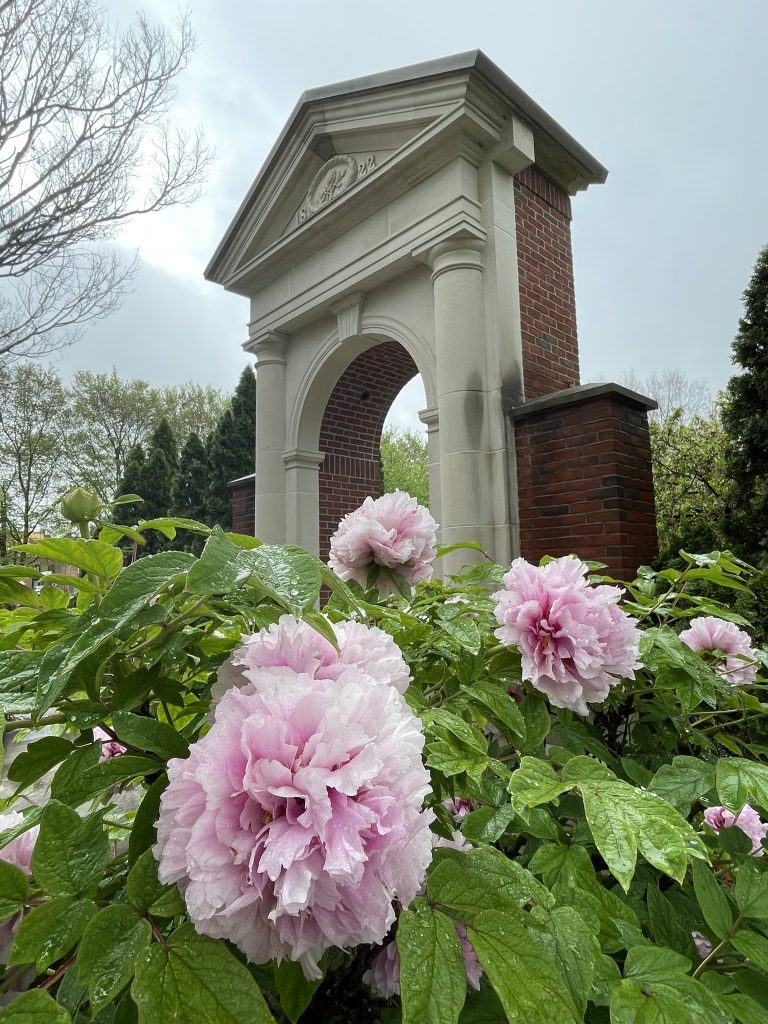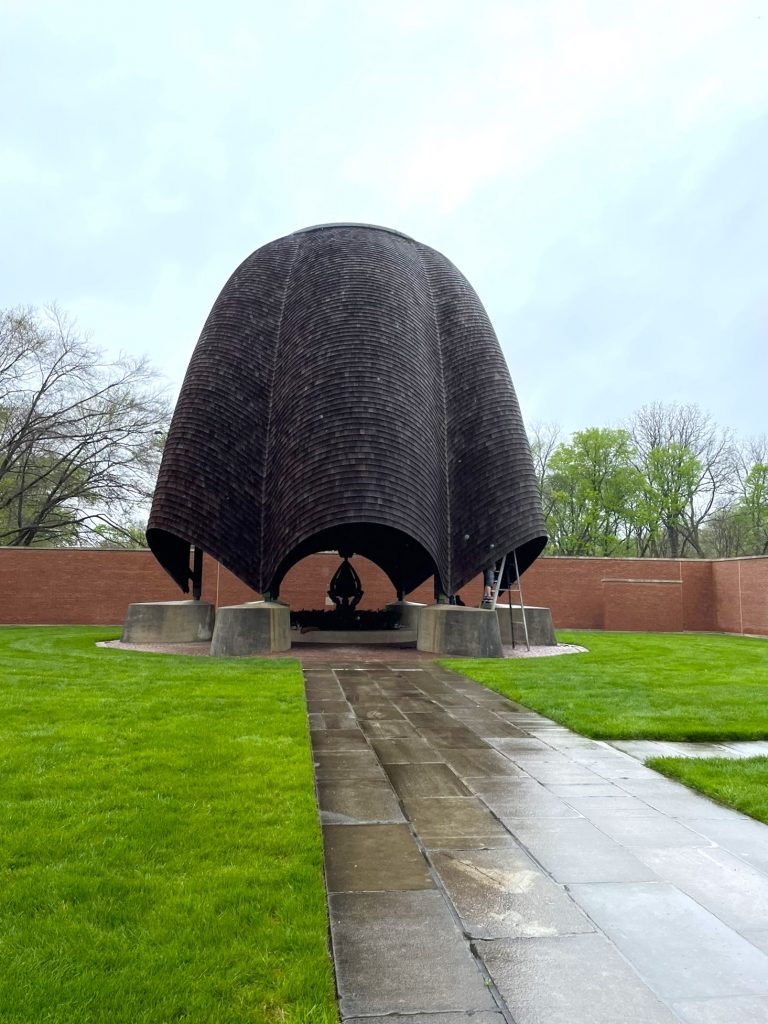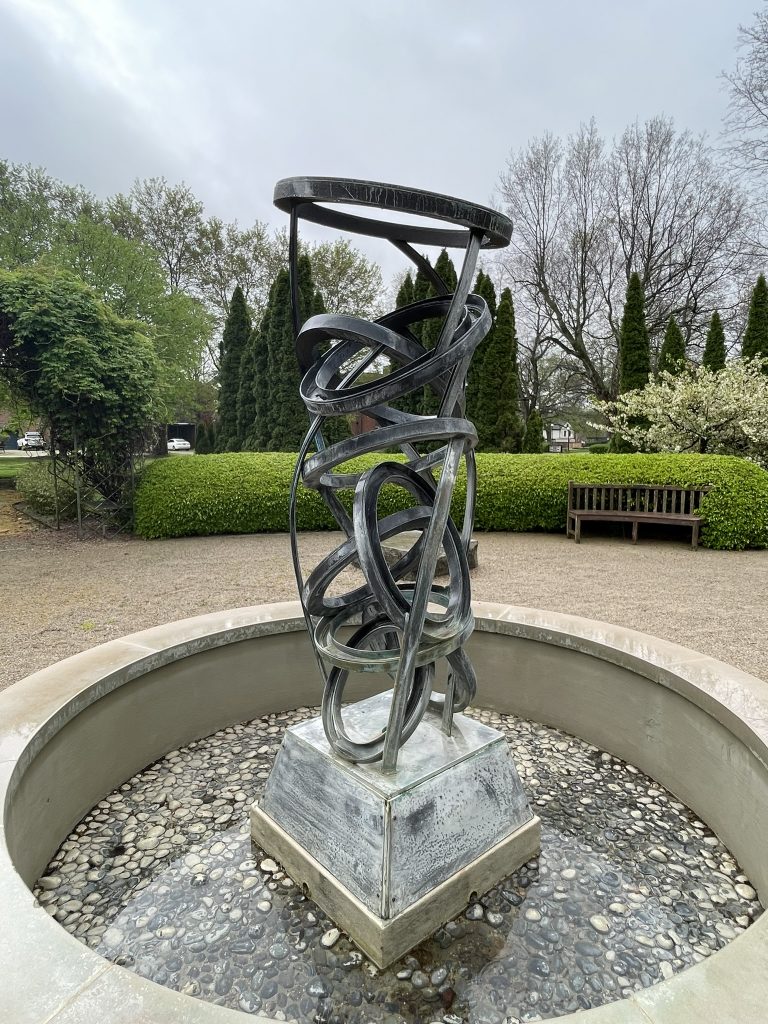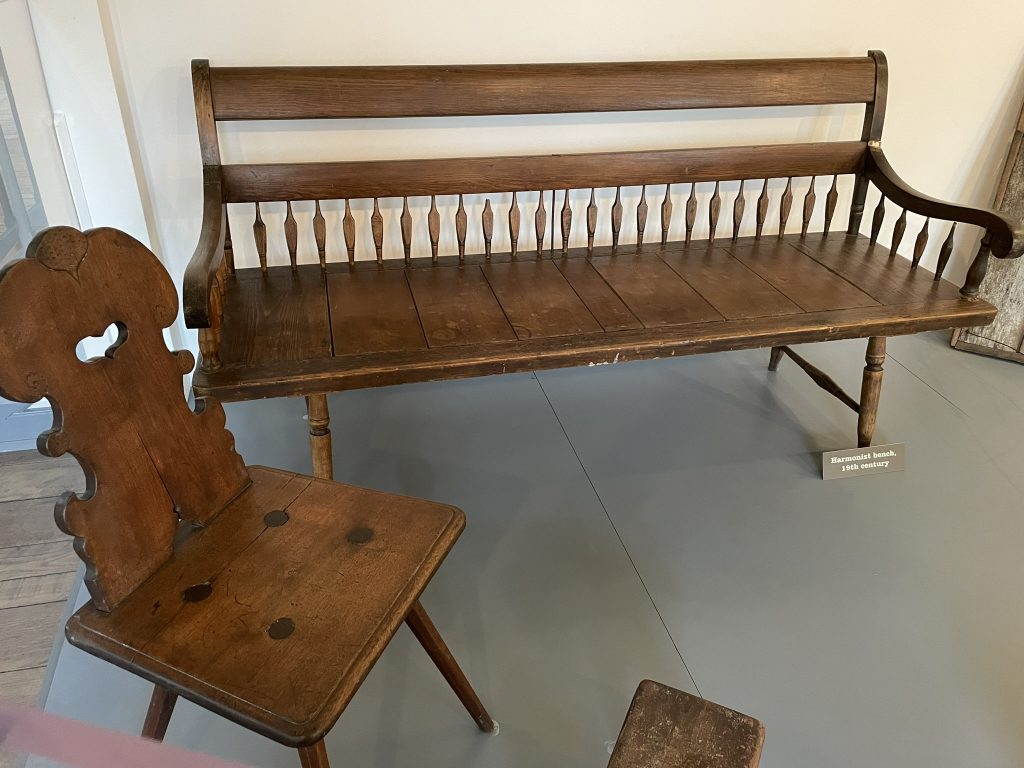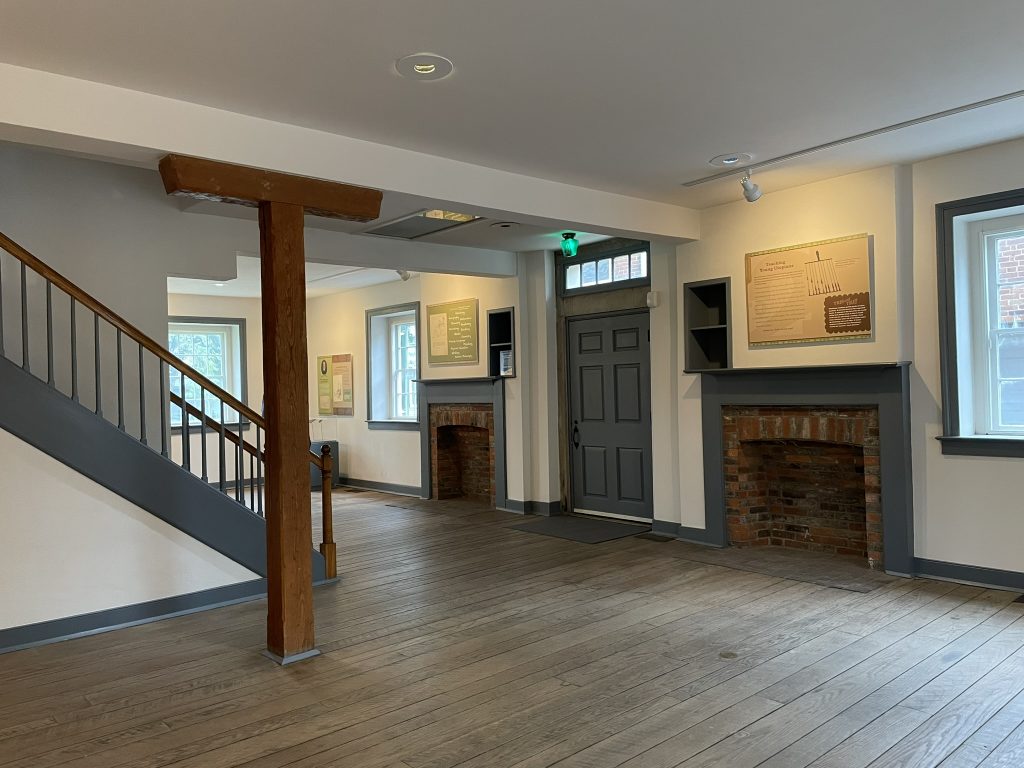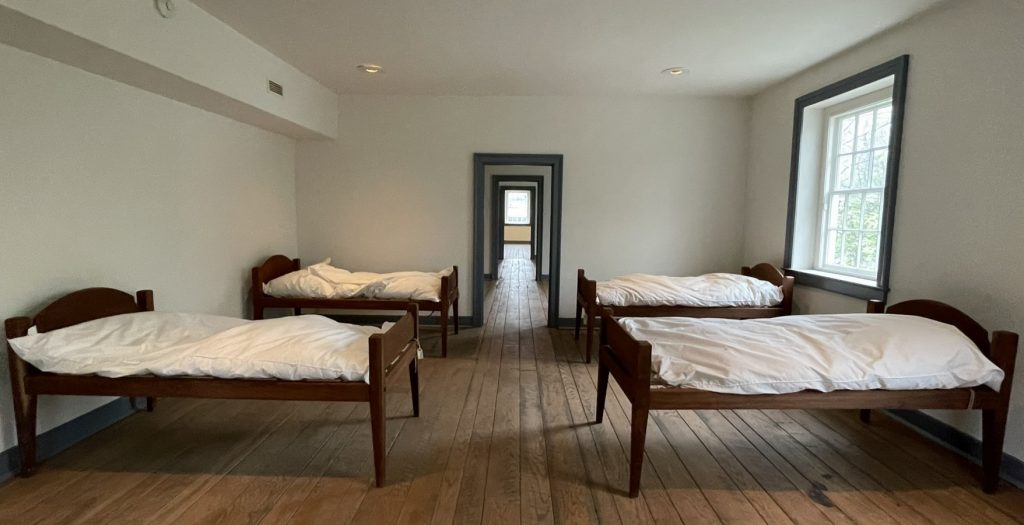New Harmony, Indiana, is a small town with a rich history – it is the site of two early American utopian communities! We spent a few rainy hours walking around, touring Community House #2, and taking a history tour.
The small town’s claim to fame started back in 1814 when the Harmony Society, led by George Rapp, relocated from Harmony, Pennsylvania, after the promised second coming of Christ didn’t happen.
Deciding that they were just in the wrong spot, the entire community headed more than 500 miles west, to what was then truly wilderness.
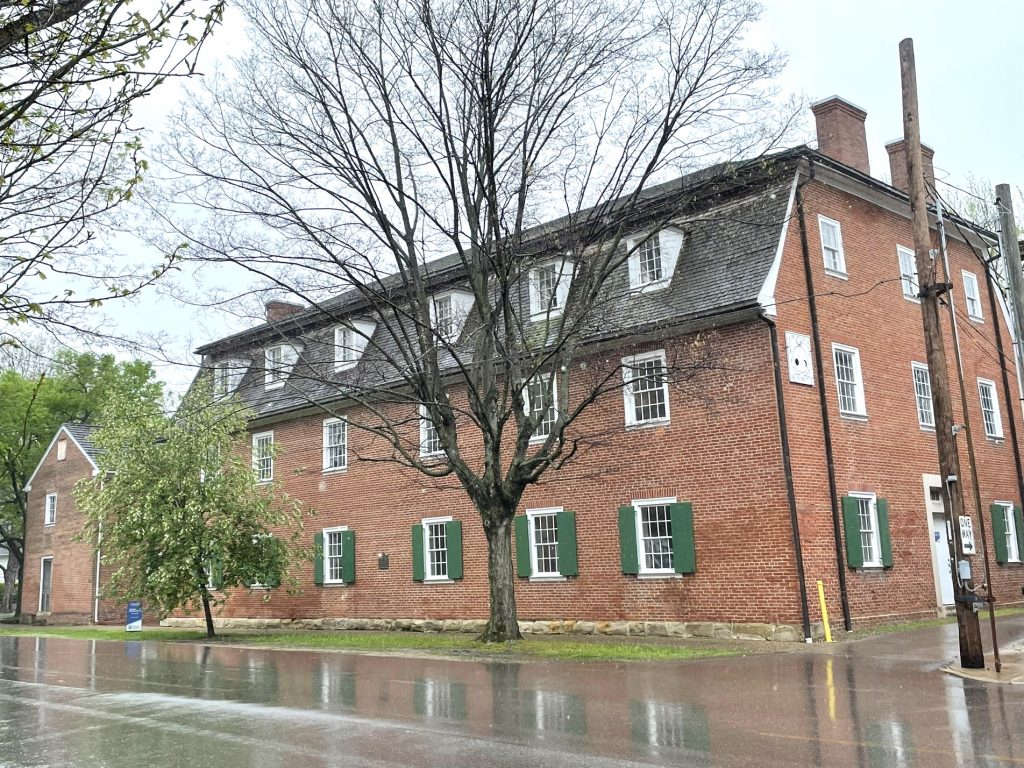
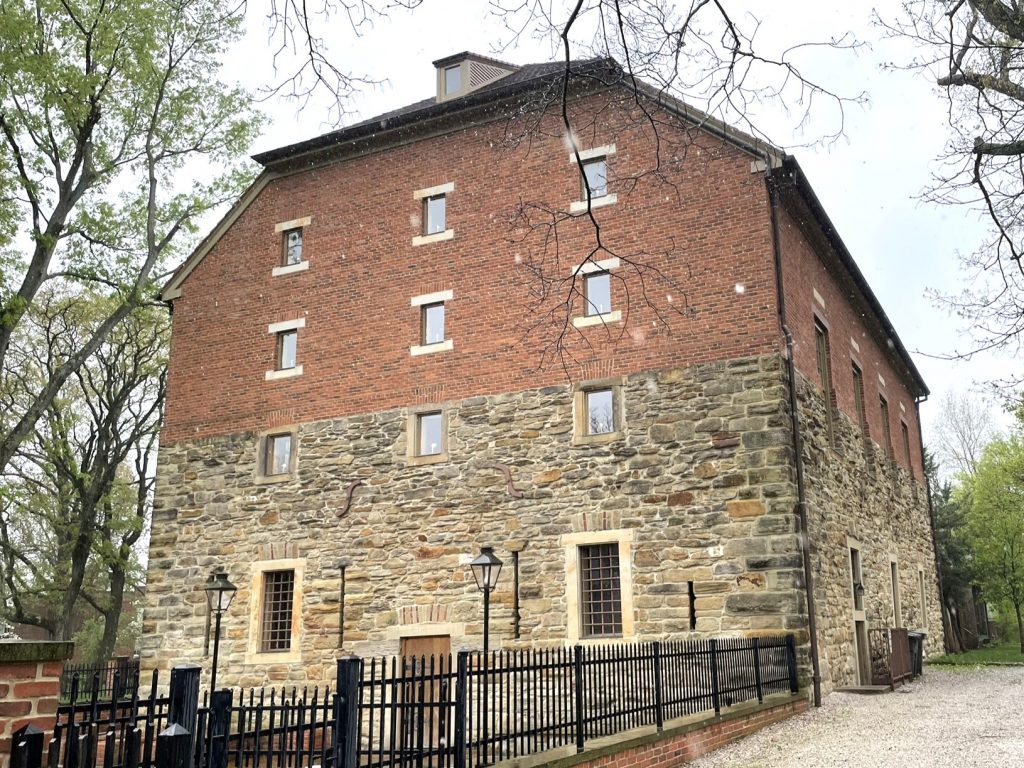
The Harmonists didn’t just sit idly by and wait for things to happen. They got busy building showing God that they were worthy! Over the next decade, they put up more than 160 buildings and created a town. They built factories, manufactured goods for sale outside the community, farmed, and much more.
The Harmonists had three core beliefs:
- Communal living – nearly all property and goods were shared.
- Celibacy – marriage and having children were discouraged.
- Millennialism – a belief that Christ would return to earth and rule during the Millennium, a 1000 year period of peace and prosperity.
However, by 1824, when Christ still hadn’t returned, the Harmonists went back to Pennsylvania (this time to the town of Economy, now known as Ambridge).
At that point, Robert Owen stepped in and purchased the town. Owen was a social reformer who wanted to create a “superior social, intellectual and physical environment.”
Alas, his experiment failed in just two years, in part because it drew in a number of crackpots and freeloaders, and in part because they just couldn’t get their act together to function and govern.
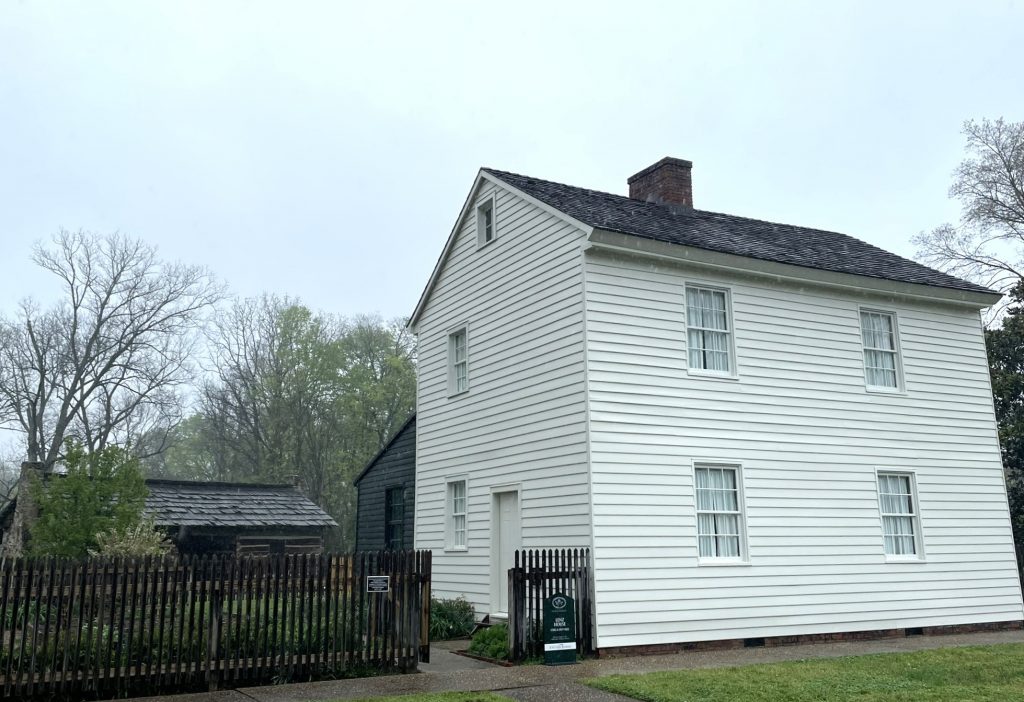
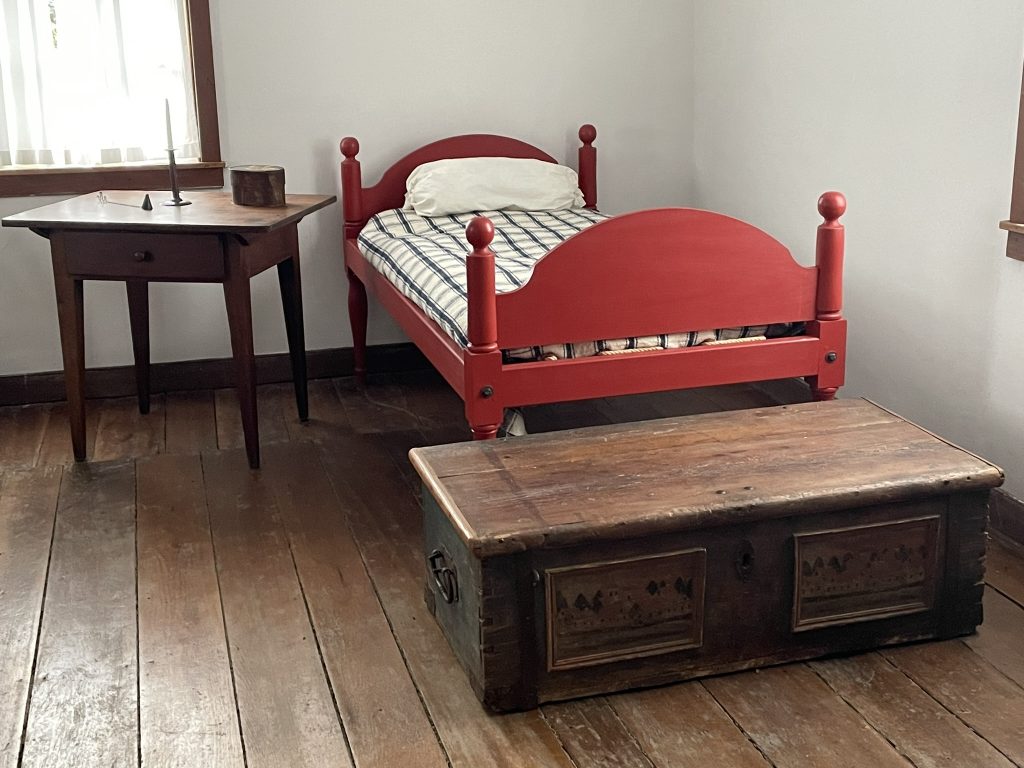
However, Owen’s community did attract a number of scientific- and education-minded individuals, and it subsequently became reputable in natural sciences, especially geology. It also opened some of the first public schools in the United States educating both boys and girls. So it wasn’t a total failure.
Many believe today that the town is a source of high spiritual sensitivity, and it draws in people who are interested in such a thing (making some argue that there’s presently a third utopian society). It’s a very peaceful town (2020 population: just 700 people!), with a well-preserved historic district. Many of the old Harmonist buildings have been restored, many by an heiress who arrived in the 1960s and supported a number of restorations and careful additions, such as the Roofless Church designed by Philip Johnson.
The cover photo is of the 1838 Working Men’s Institute, the oldest continuously operating library in Indiana. It hosts a small bizarre museum today.
